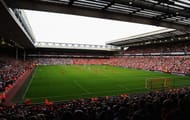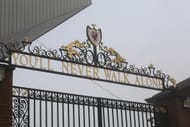A few years ago, when Liverpool FC were one of the most strongest teams in all of Europe, I had heard my cousins speaking about how it would be live the ‘Anfield Experience’. Though I’ve never been there, I’ve always lived in awe of Liverpool’s records, and more importantly, their time at Anfield.
Stadiums have always inspired the football fan in me. Their amazing architecture and beauty have always made me wonder why in heaven’s name someone could not follow the beautiful game. At times, when I’m asked to describe Anfield, I’m left gasping for both breathe and words. It’s impossible to fathom how important Anfield has been to Liverpool’s glory and downfall.
It all started in 1884, when Anfield was owned by a John Orrell, a small land owner who befriended a member of Everton FC’s board of directors. Since the start of the season, Everton were in need of a new venue owing to the large crowds that produced too much noise for their Priory Road stadium to handle. The shift was imminent, and Everton moved from Priory Road to Anfield.
Everton attracted large crowds, and as such asked for newer stands to be erected to accommodate extra 8,000-odd seats for the incoming crowds. Orrell lent the pitch for a small rent at the time. Everton quickly grew in popularity and quality, thus becoming Anfield’s first league champions. Anfield at the time was considered one of the world’s greatest stadiums and hosted an international match between England and Ireland.
Anfield hosted its first league match in the September of 1888. Somewhere around June of 1892, negotiations to buy out the land from Orrell started, which culminated into the shifting out of Everton to Goodison Park. The club that bought the land were Houlding, or as we know them today – Liverpool FC.
Houlding decided to create a new club to occupy the new empty football ground, and renamed themselves as Liverpool FC and Athletic grounds LTD. They played their first game on September 1st 1892.
The ground was designed by the great Scot Architect, Archibald Leitch (who is also responsible for Old Trafford). Stands had a distinctive red and white colour, similar to the stands at Newcastle United‘s St. James’s Park.
Comprising of some of the largest grandstands in all of England, Anfield was fast becoming one of the greatest grounds in all of Europe, and with Liverpool FC at its helm; it was one of the most difficult places to play football.
The Liverpool badge has these words (YNWA) proudly inscribed into its emblem; words that have been repeated over the years, through thick and thin with pride and passion. Liverpool FC was soon becoming the force to be reckoned with. They are till today one of the most decorated teams in the whole world.
Liverpool always boasted of talent capable of upsetting even the best teams on their day, and them winning the European Championship the maximum number of times for an English side is a testament to their managers, players and the Anfield experience. Liverpool always had some really brilliant men leading the side. The managers have always been brilliant tacticians and unsurpassed leaders.
Anfield has been home to some of football’s greatest names. Players and managers have made Anfield their abode for generations. Even today, many players would love to come to Anfield, even though Liverpool may have struggled for glory in recent times.
It’s the undying passion of the crowds, and the way they back their players that have been attracting big names time and again. Some of these players today may not find it easy to witness the downfall, having seen glories absolutely unheard of by past teams. Sadly, the Liverpool outfit today isn’t as imposing as the one of yore.
Steven Gerrard is the standing example of this notion. Having spent all his life in Merseyside he led the team to an astonishing comeback in Istanbul as they rallied from three goals down to win the Champions League. But he hasn’t managed to win the league yet. His relentless runs down the centre, his flawless penalties and unbridled passion to do well for Liverpool is what has kept him going on and on for so many years bereft of trophies.
Liverpool may not have the spending power of the Sheikhs or the Russians but they make up for that with heart. The never-say-die-attitude is seen glistening on the skin of every current and former Liverpool. That feeling can’t duplicated by any club, let alone be adopted. The Scourers wear their heart on their sleeve and will always remain faithful.
As well as being blessed with a great of fans, they have also been blessed with some of the best managers at the time. Anfield has two gates named after their former managers, Bill Shankly and Bob Paisley. A statue of Shankly is erected outside the stadium, which comfortably houses around 48,000.

A general view of the stadium during the Barclays Premier League match between Liverpool and Manchester City at Anfield on August 26, 2012 in Liverpool, England. (Getty Images)
When the Fenway Sports Group took over Liverpool, plans to shift out of Anfield were shelved, as the new owners had decided to just renovate this majestic ground, they too must have believed that Anfield has a legacy that simply cannot be replaced.
The colosseum that is Anfield, makes my heart heavy, makes me proud to say that I’m a football fan. And someday I might just get to say: “This is Anfield!”
For part one of the Football’s greatest Colosseums on Old Trafford, click here.
